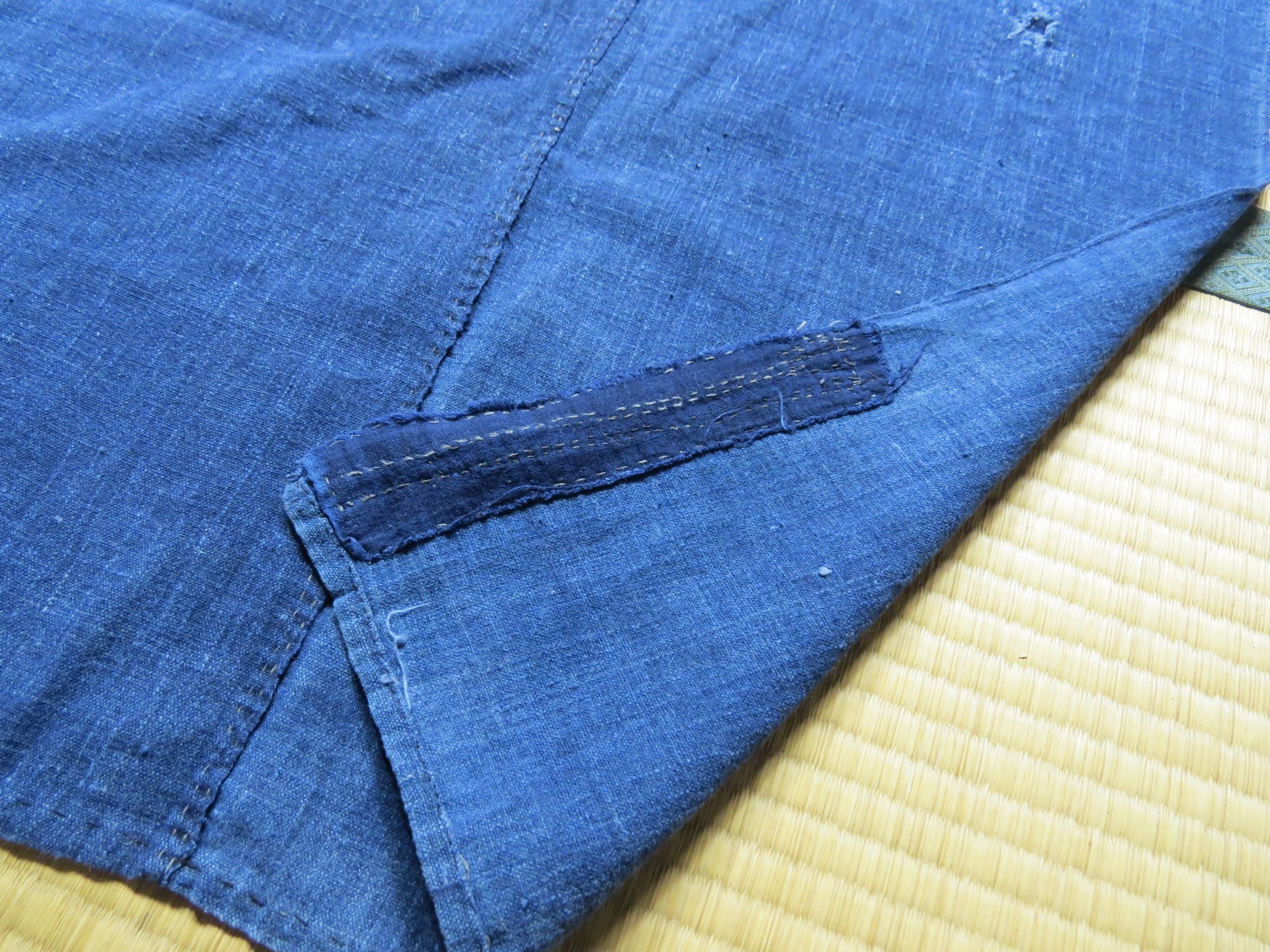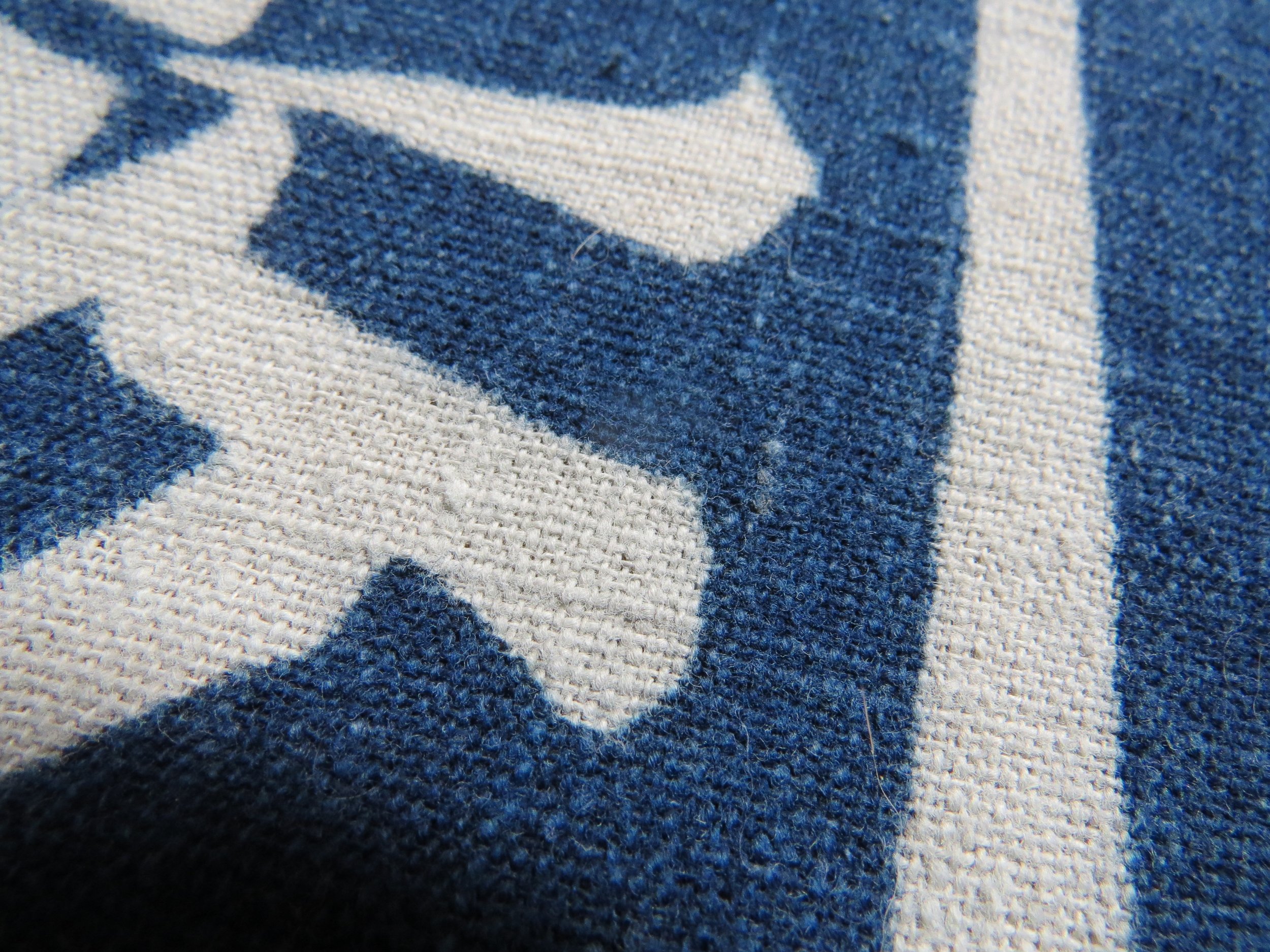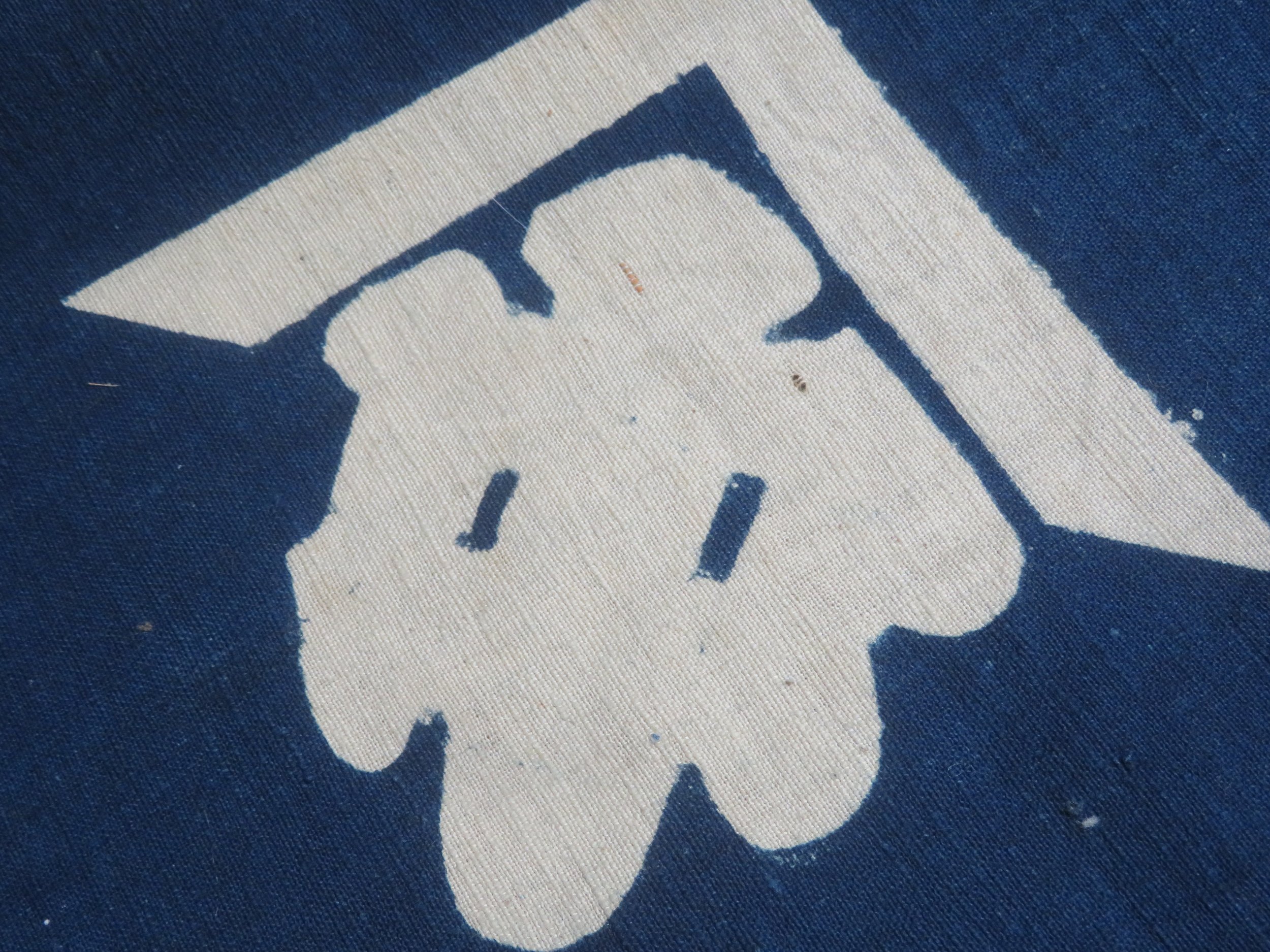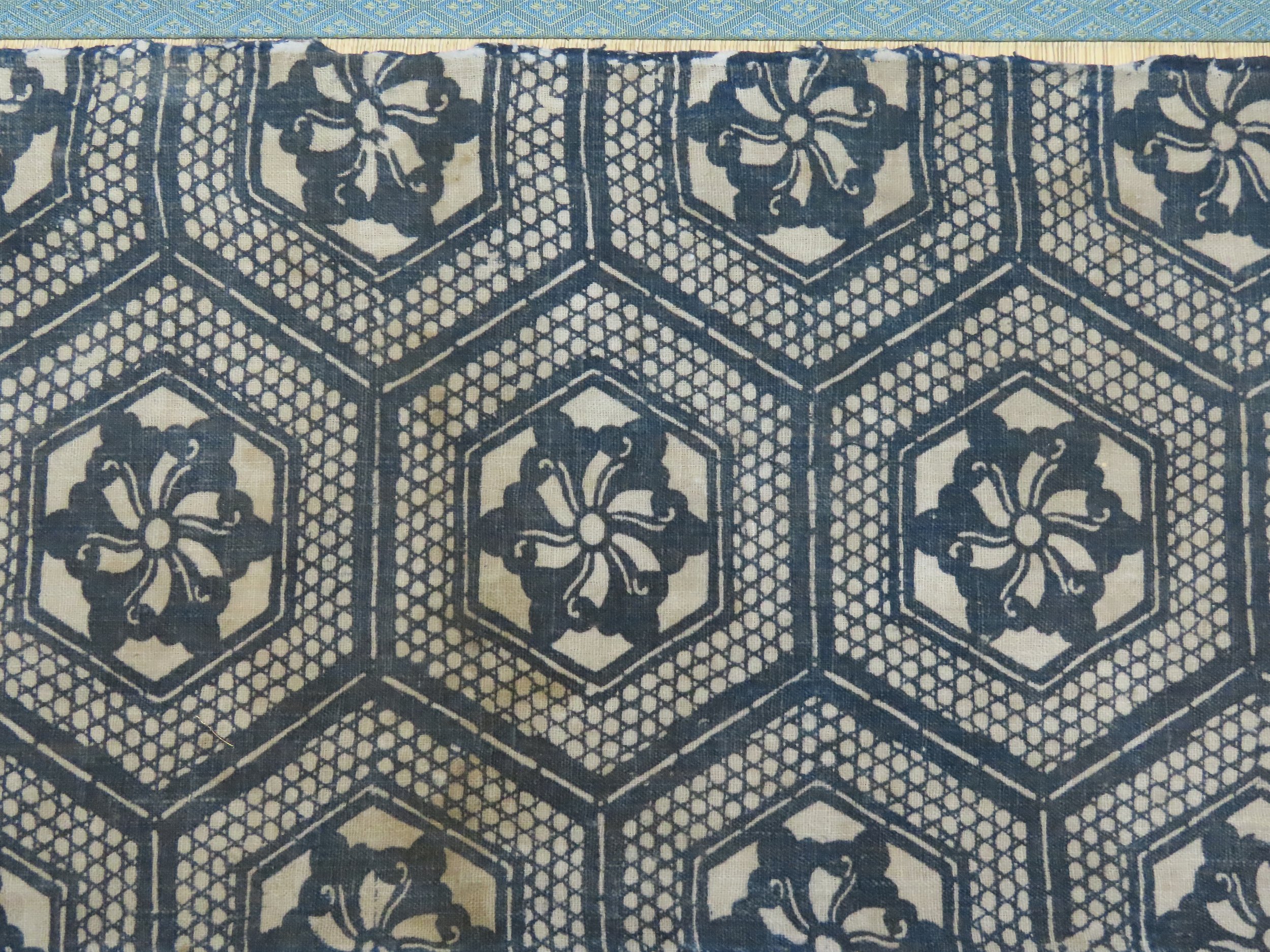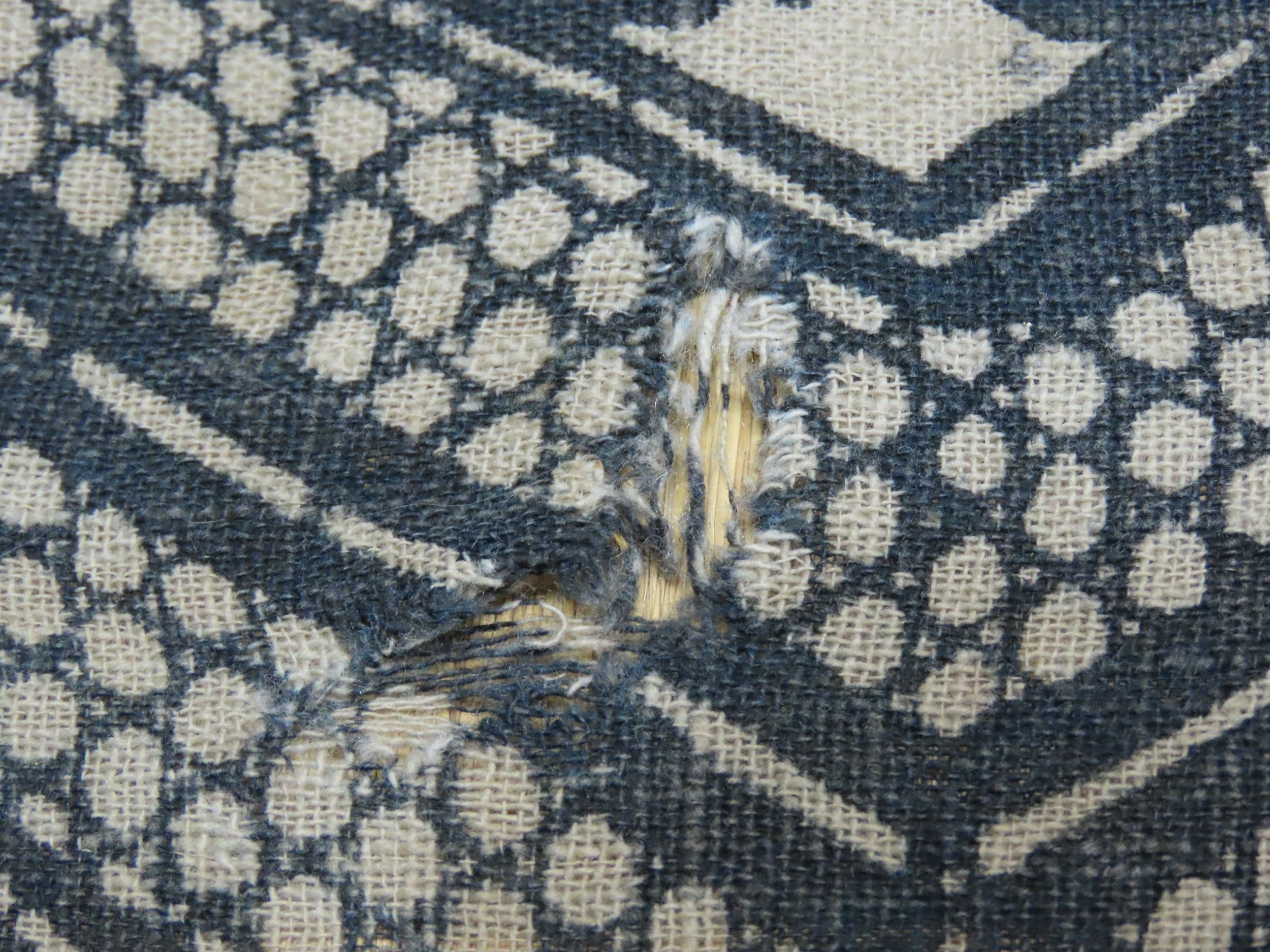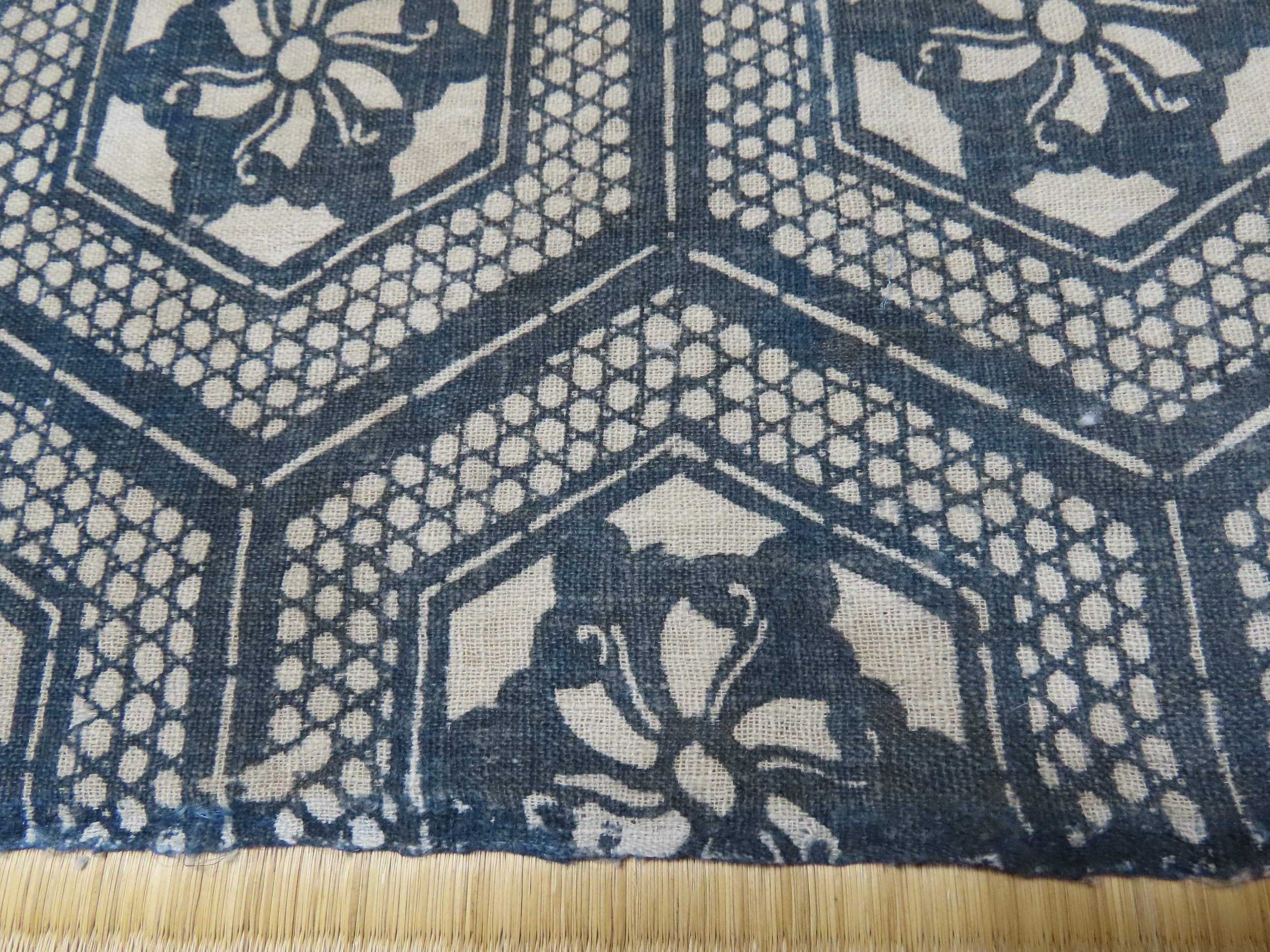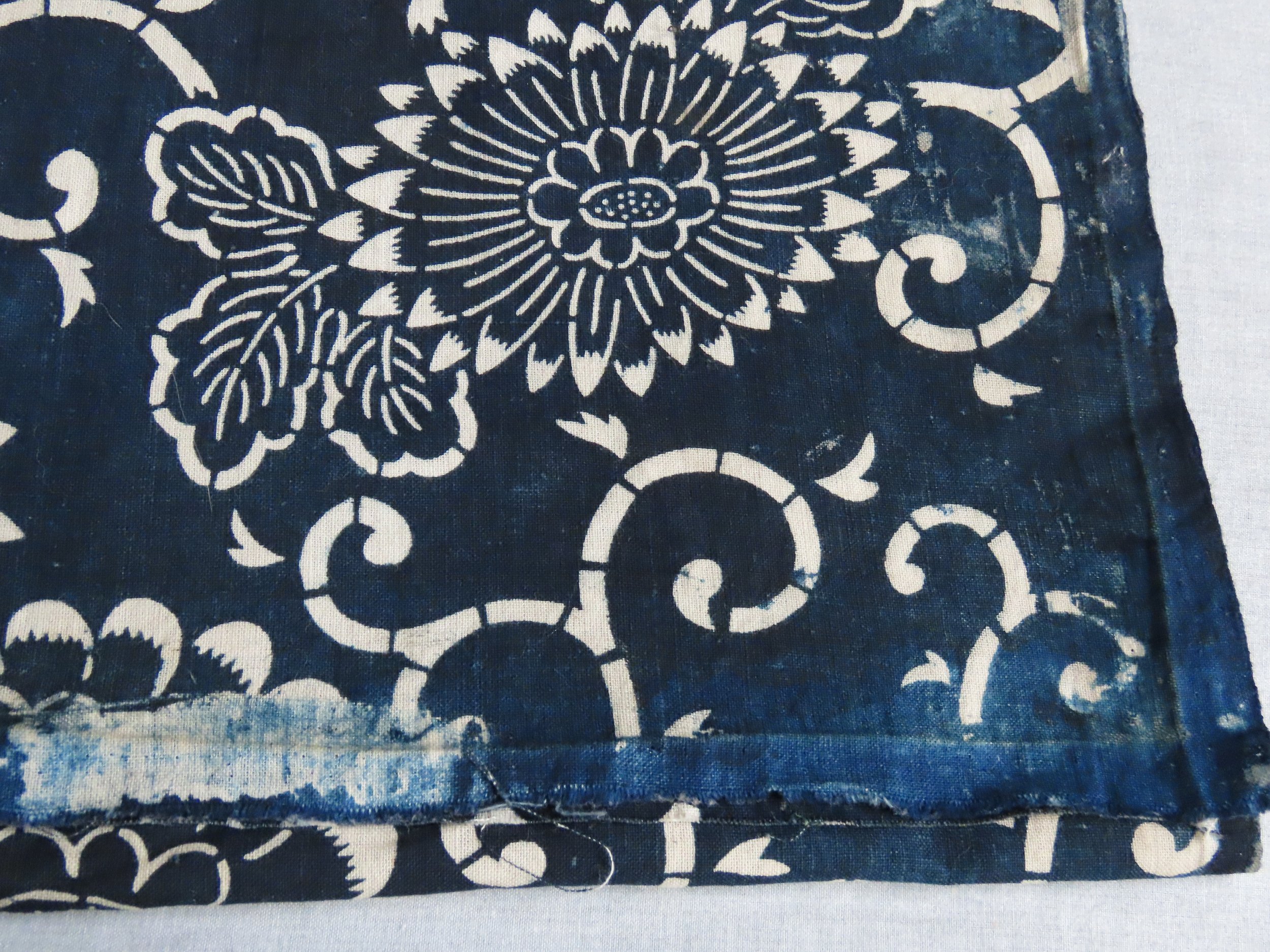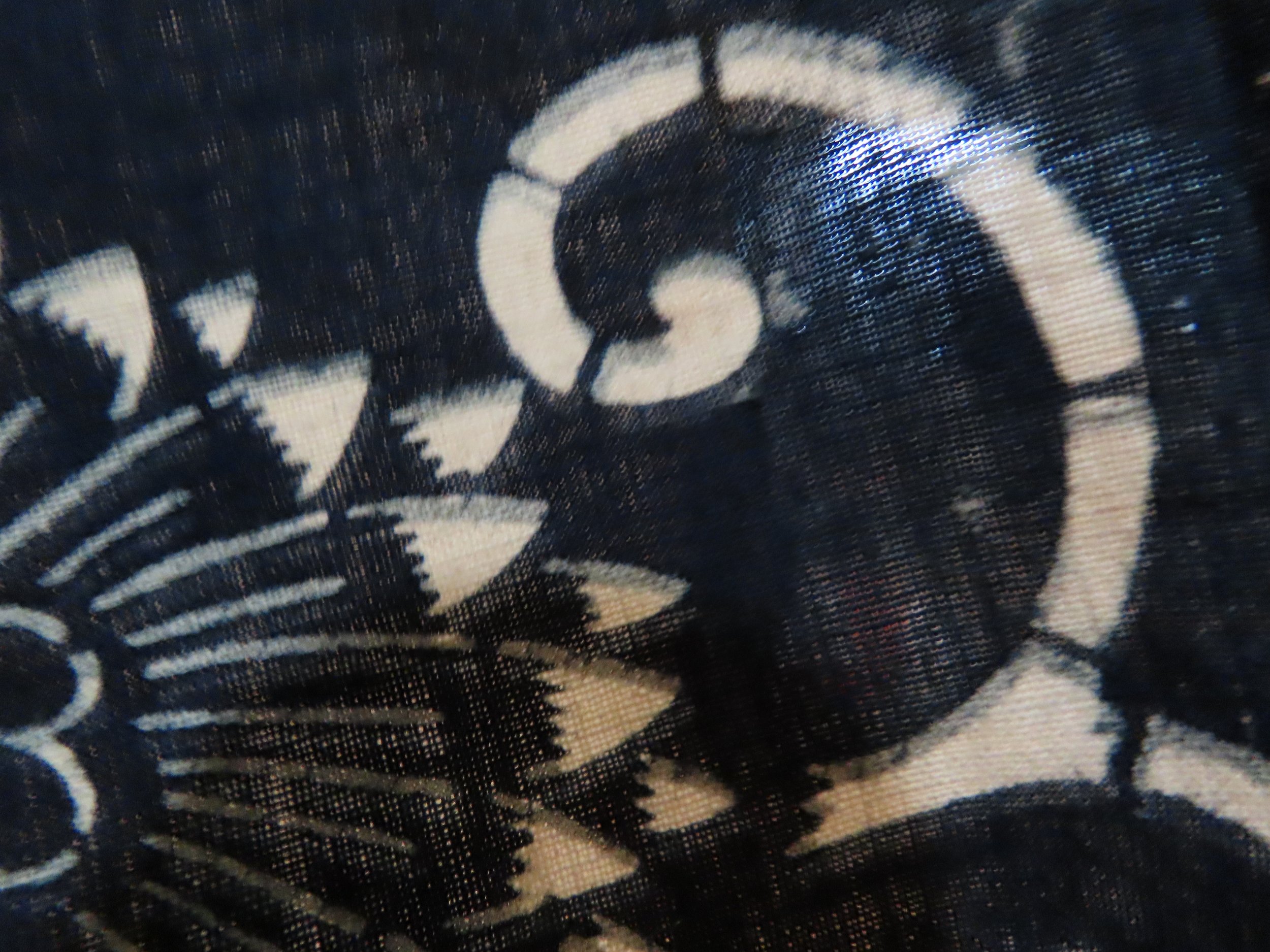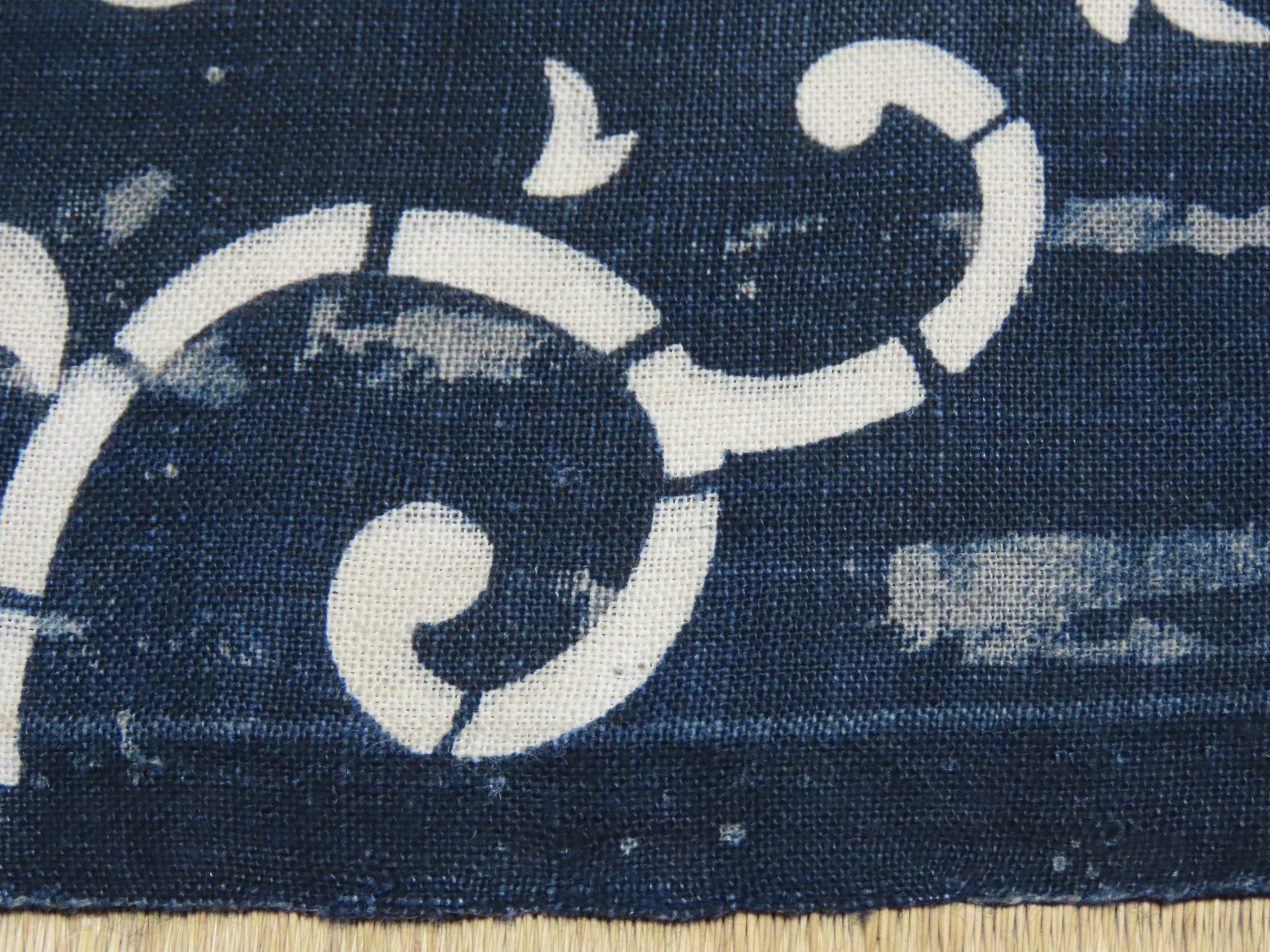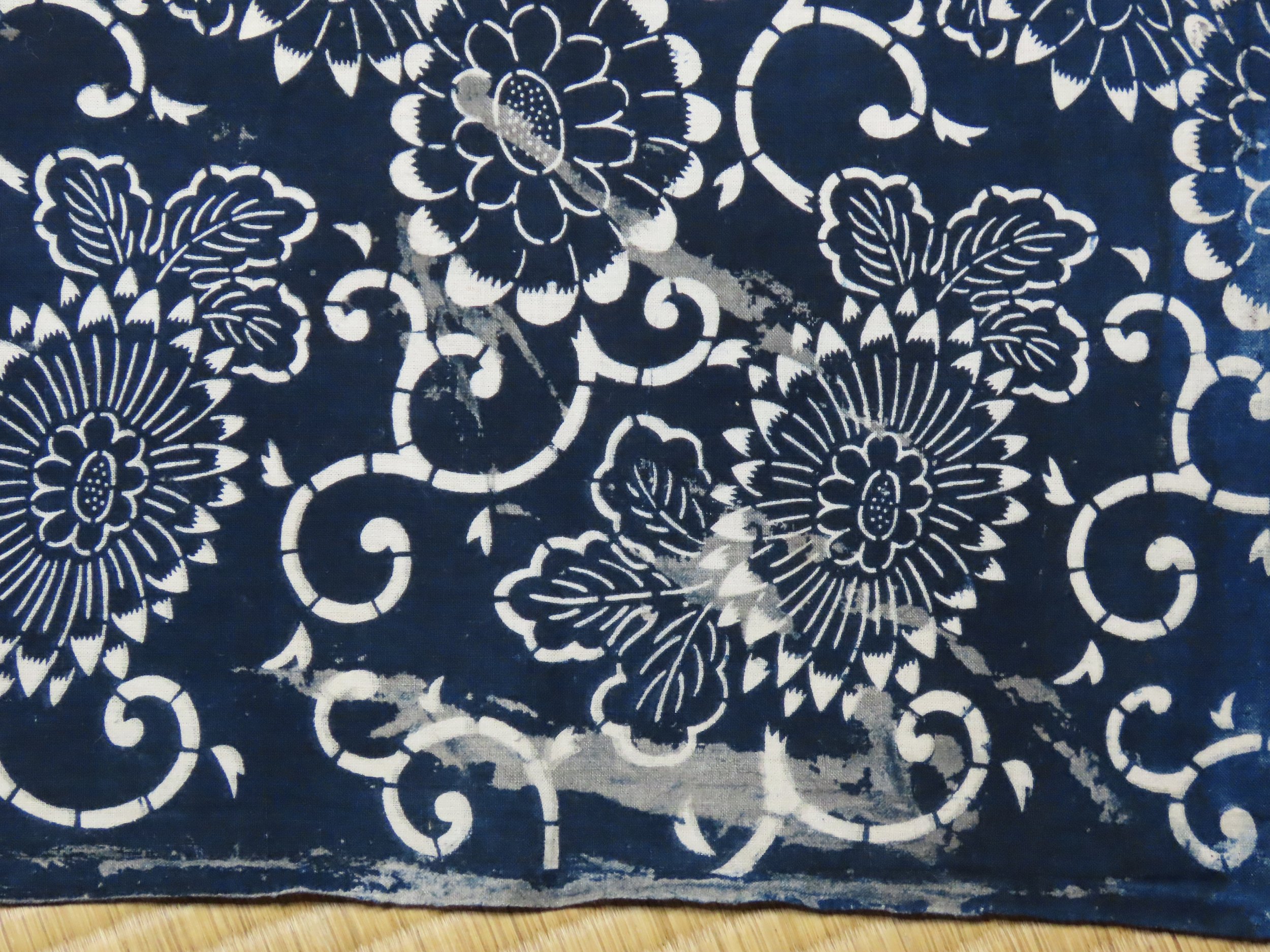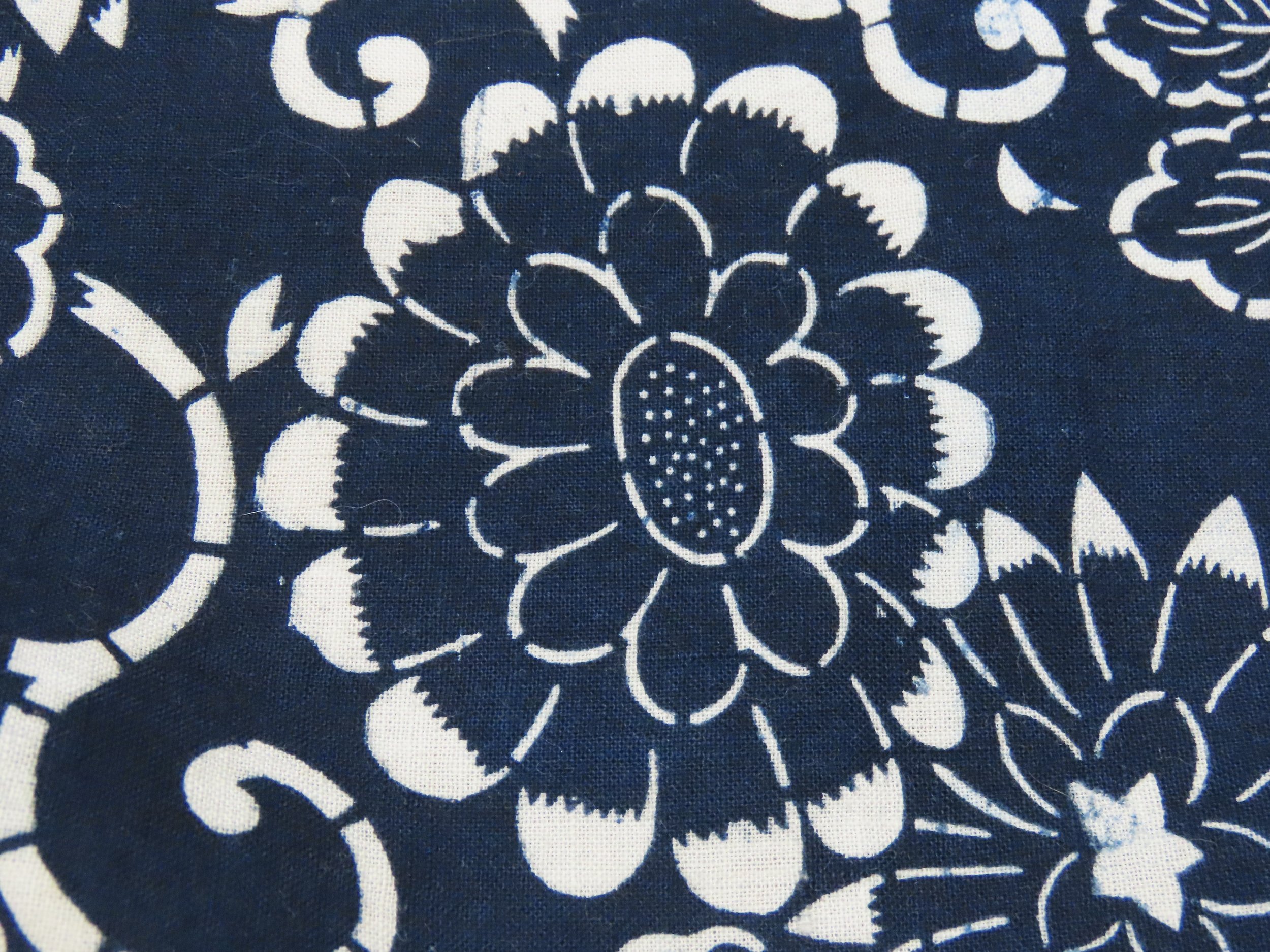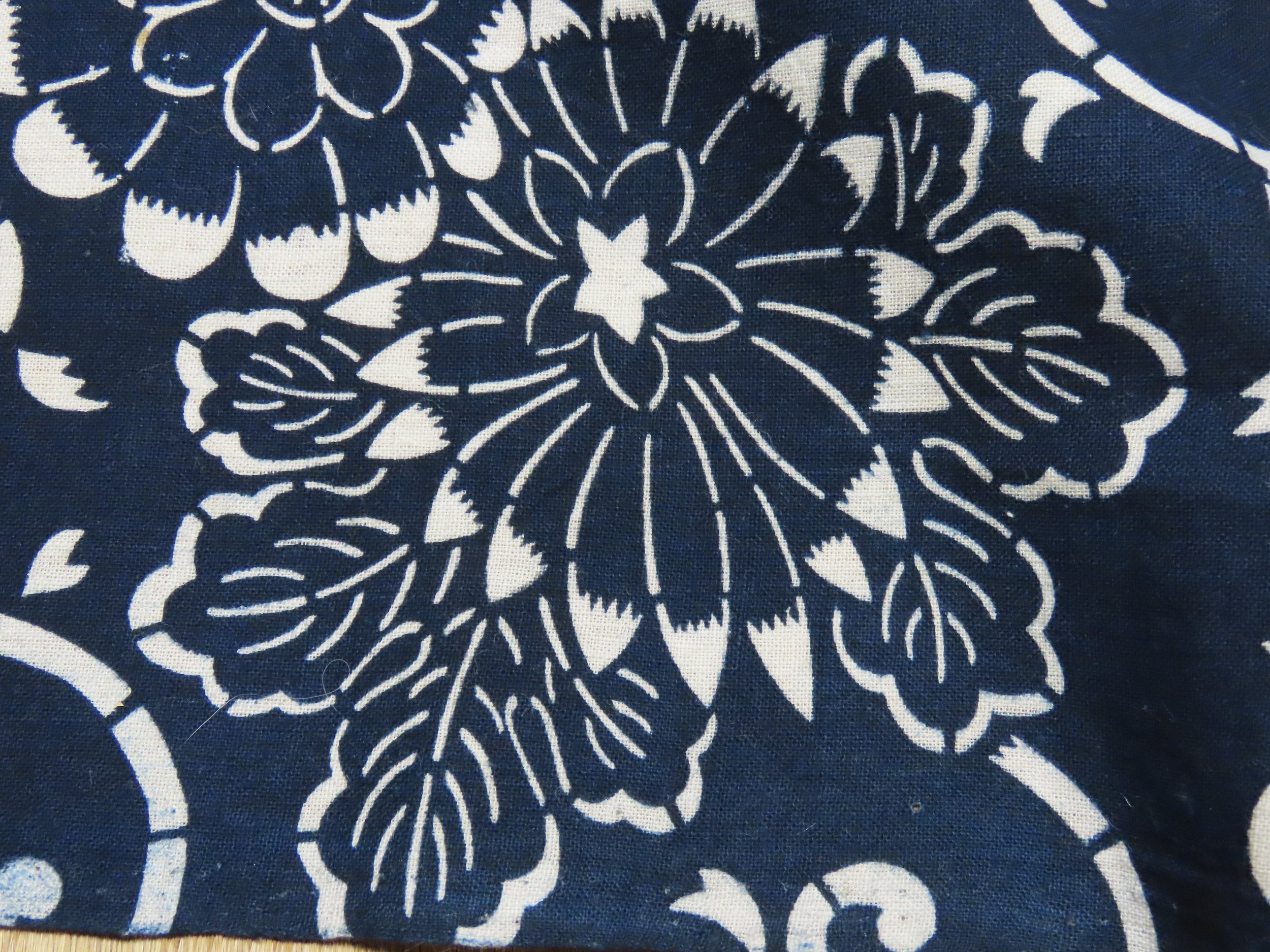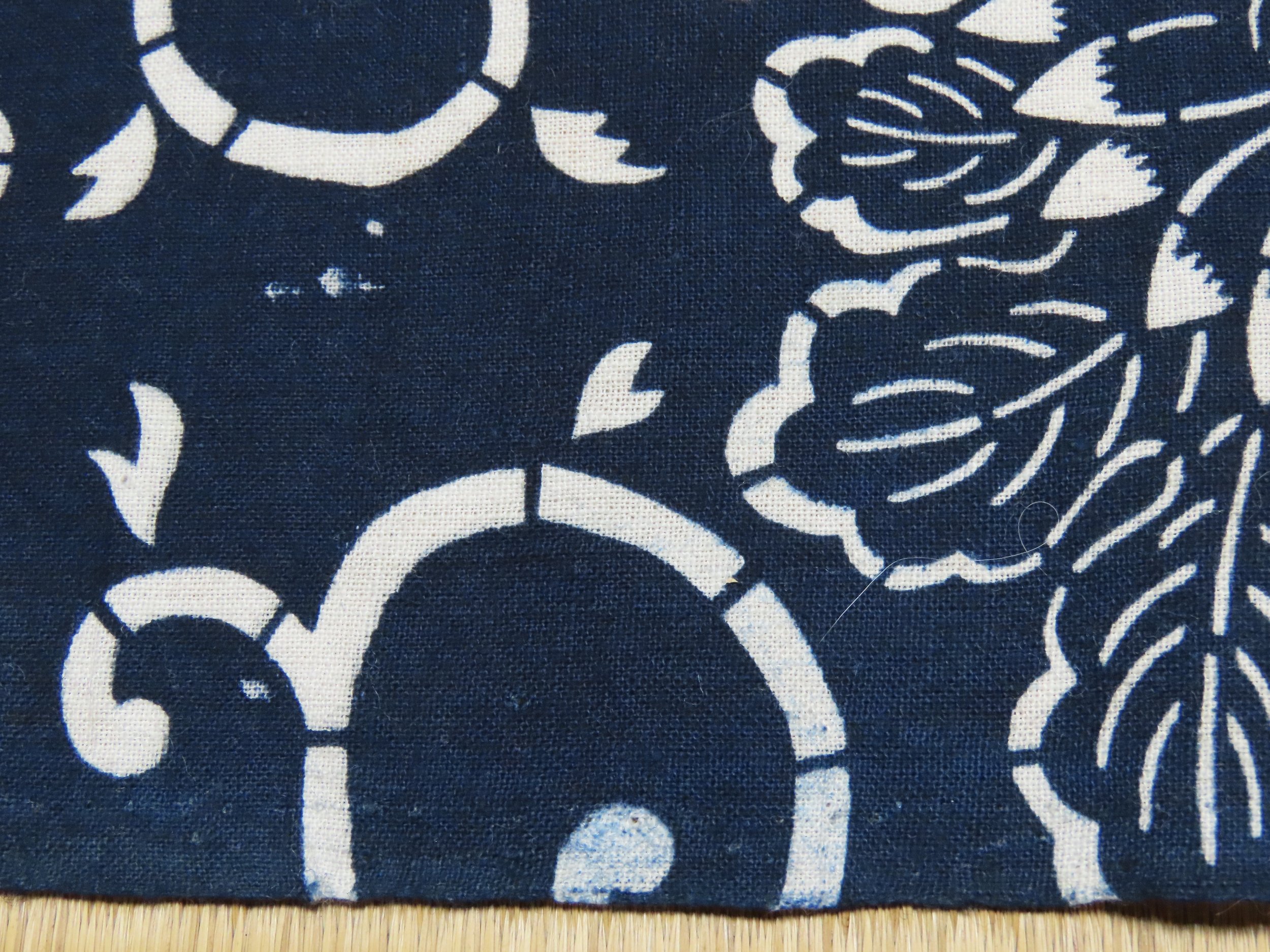 Image 1 of 22
Image 1 of 22

 Image 2 of 22
Image 2 of 22

 Image 3 of 22
Image 3 of 22

 Image 4 of 22
Image 4 of 22

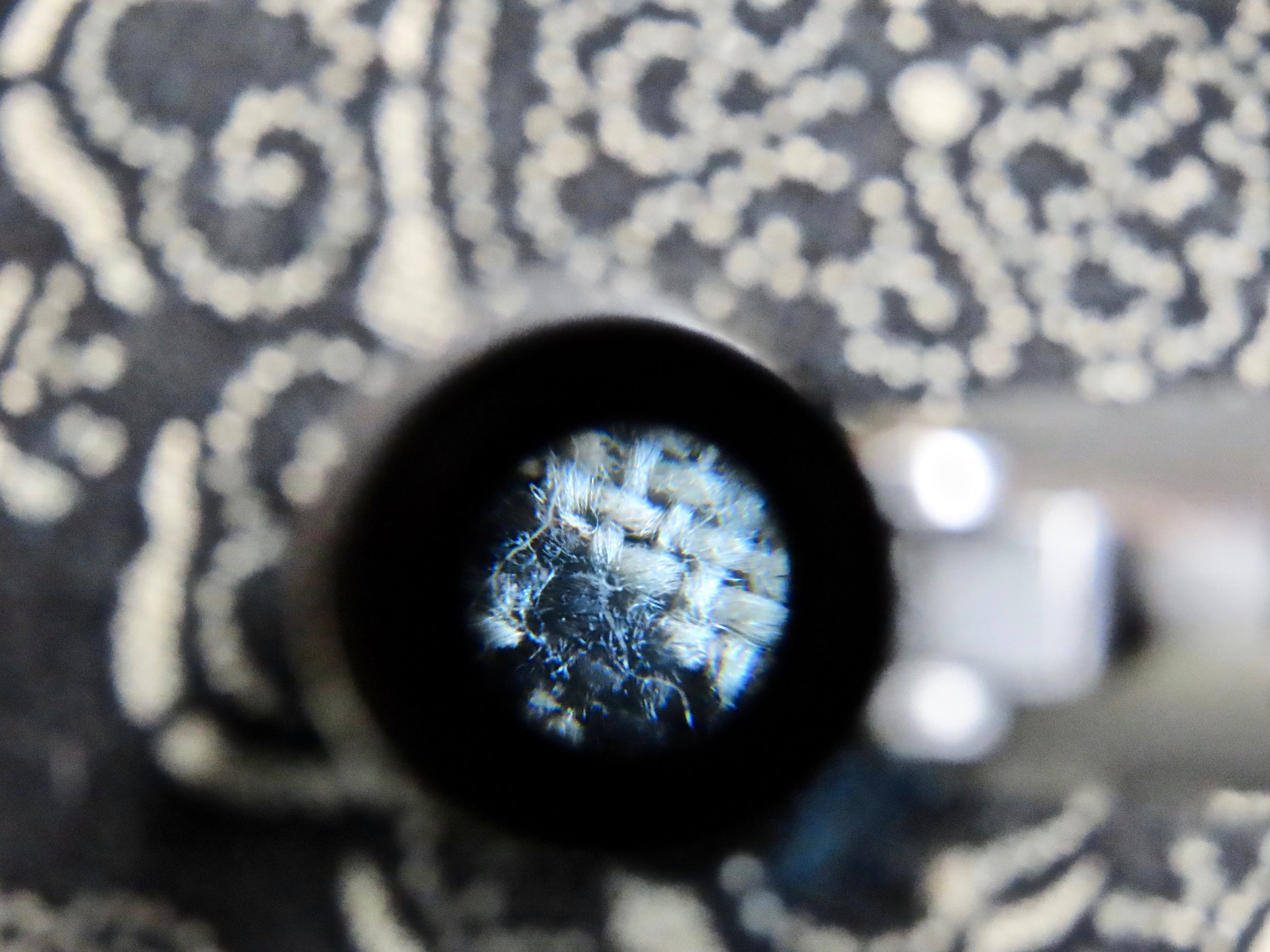 Image 5 of 22
Image 5 of 22

 Image 6 of 22
Image 6 of 22

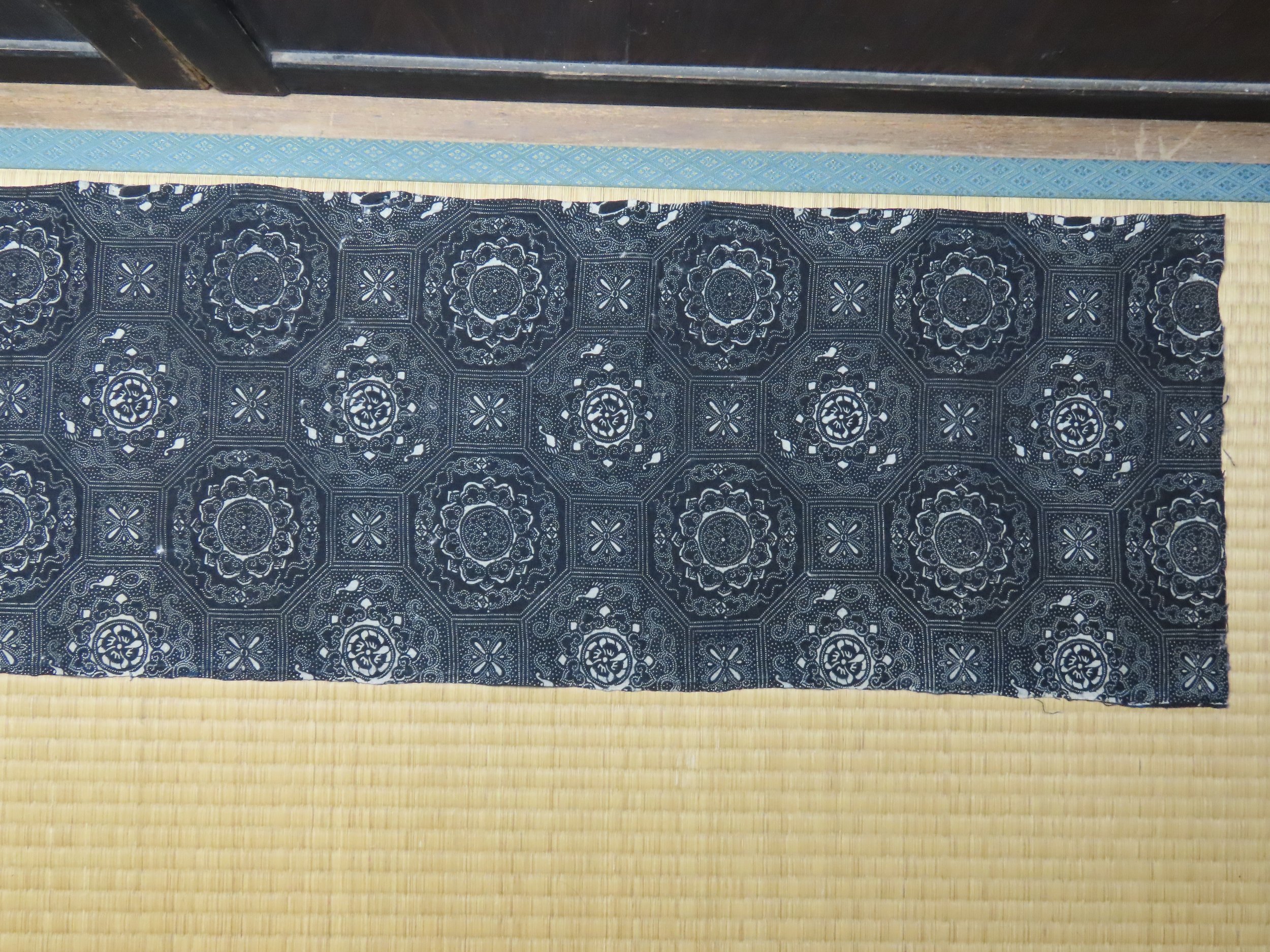 Image 7 of 22
Image 7 of 22

 Image 8 of 22
Image 8 of 22

 Image 9 of 22
Image 9 of 22

 Image 10 of 22
Image 10 of 22

 Image 11 of 22
Image 11 of 22

 Image 12 of 22
Image 12 of 22

 Image 13 of 22
Image 13 of 22

 Image 14 of 22
Image 14 of 22

 Image 15 of 22
Image 15 of 22

 Image 16 of 22
Image 16 of 22

 Image 17 of 22
Image 17 of 22

 Image 18 of 22
Image 18 of 22

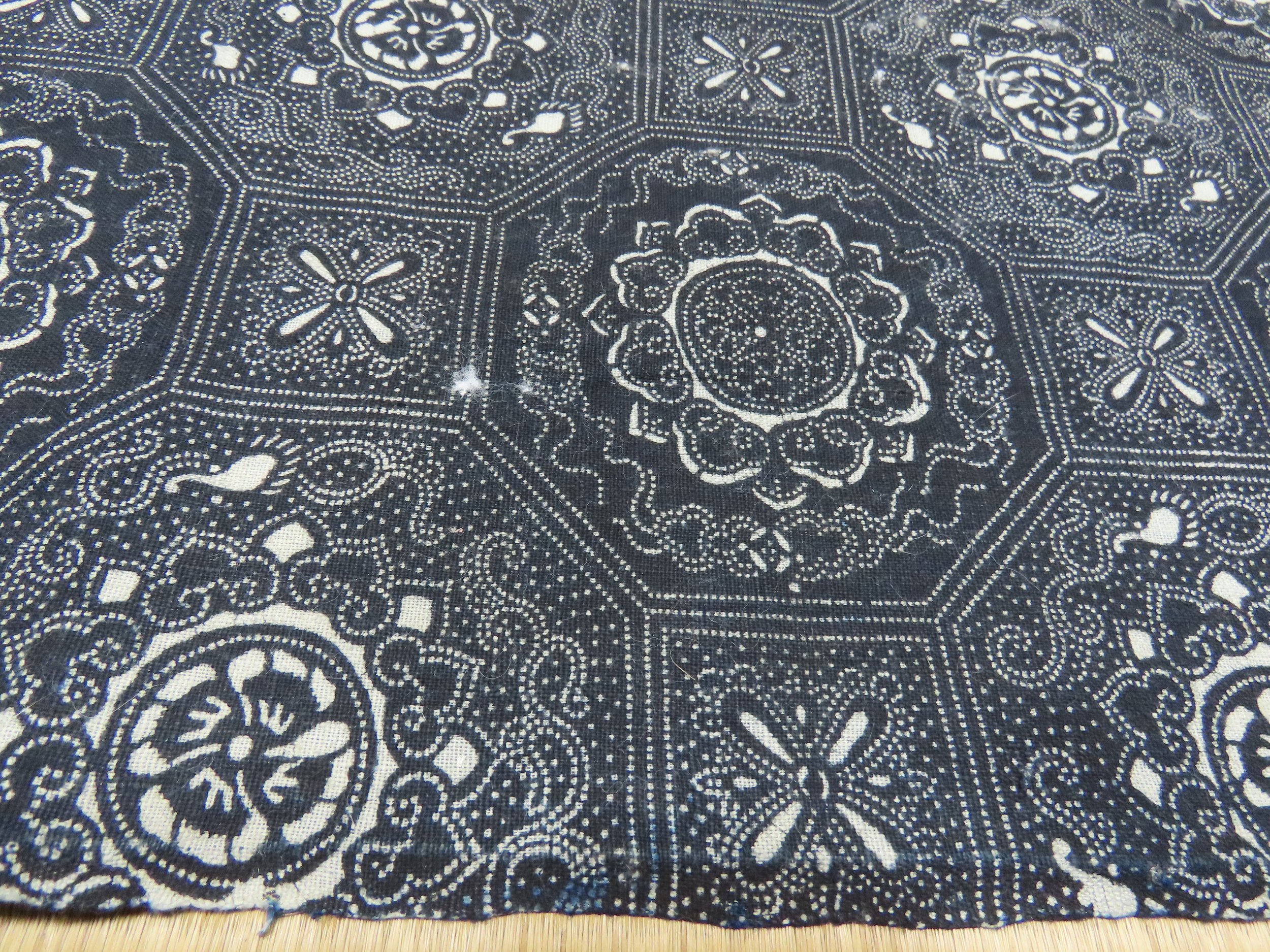 Image 19 of 22
Image 19 of 22

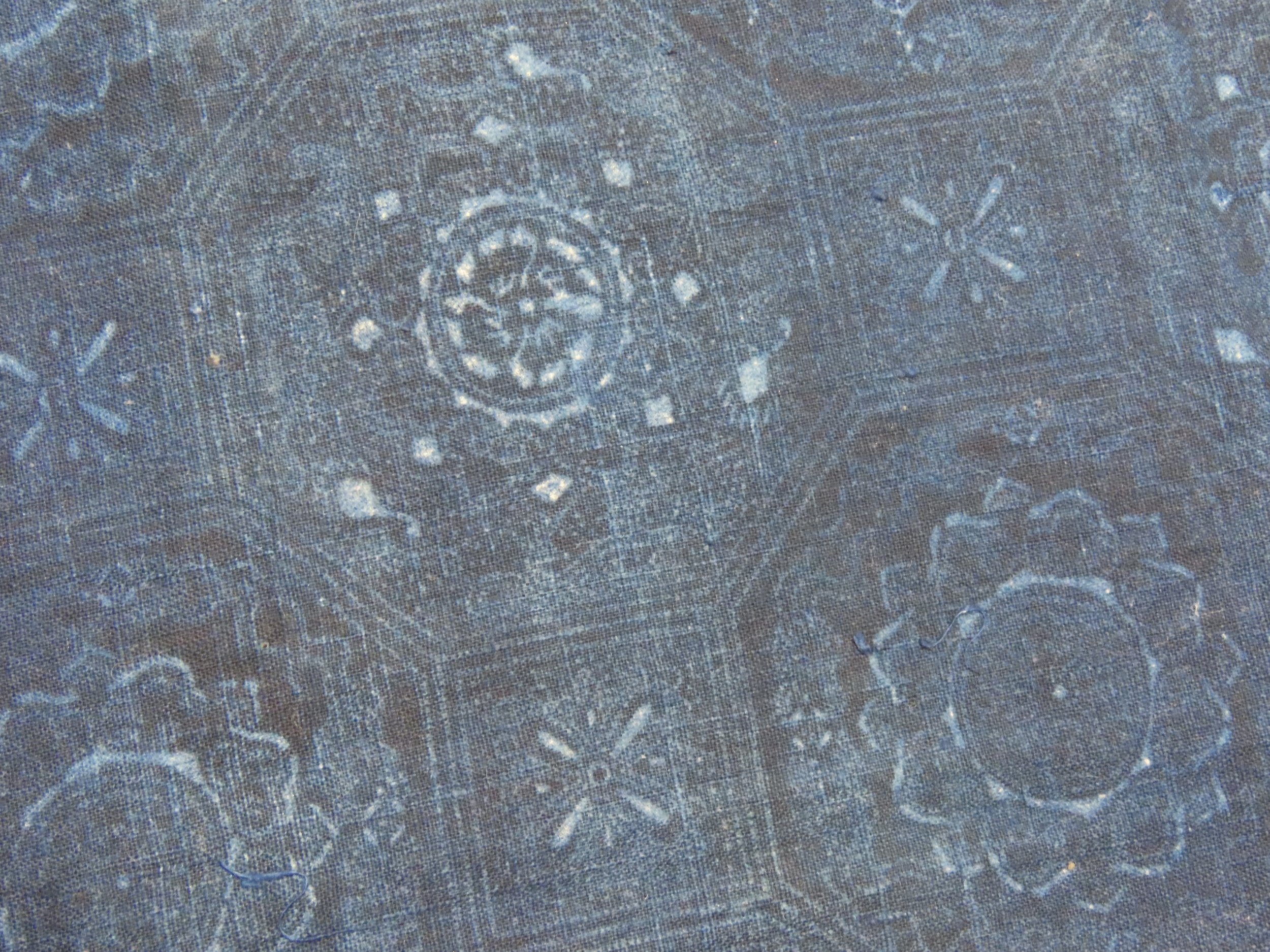 Image 20 of 22
Image 20 of 22

 Image 21 of 22
Image 21 of 22

 Image 22 of 22
Image 22 of 22























Antique Indigo Chuugata KATAZOME Cotton FABRiC - Hand Woven
This is an indigo-dyed chuugata katazome cotton fabric panel from the Meiji era. Homespun, hand made fabric. Katazome is a stencil dyeing process. This is probably one panel from a futon cover made of many panels. You can tell by the telltale length, perfect size for a futon cover. The tesselated patterns, like tiling, are telltale early to middle Meiji era designs.
This is an old hand-woven, hand-dyed, japanese mingei textile treasure!! It is incredible, the time, energy and experience that went into creating this homespun work of art. This one has a dark hue, almost black seeming, and the backside shows a rich blue indigo tone. See the photos.
This is a medium weight cotton futon cover fabric. When i look closely at the fibers of the weave using a jewelers loop, I can see that they are relatively fuzzy and uneven, of varying widths. This is telltale of handspun fibers and homespun textiiles. The selvedges, the side edges, are very uneven. Lots of hand woven flavor.
Katazome is a stencil resist dye process. That means a stencil is used to apply a resist paste, which in this case is nori, a thick paste made from boiled rice. After the resist dries, it becomes basically impenetrable, and the fabric is dyed, most often with indigo. (The benefit of dyeing with indigo over other dyes is that it does not require heating up the liquid, which might start to melt away the resist paste, which becomes soft again with hot water.) The areas where the dried nori is applied 'resist' the indigo dye, which means they remain white and not dyed under that dry rice paste shell. That is the meaning of 'resist dyeing', where the rice paste resists the dye and that area remains white or undyed.
This type of katazome is called ‘ ‘chuugata’ katazome, which literally means ‘medium gauge. Chuugata katazome fabrics are somewhat older than the larger gauge less detailed designs we see later. The chuugata katazome often employ the dots, which we see a lot of in this design. These katazome must have required more skill and a careful process to produce, more than the later, larger designs. Cutting the stencils must have required a super steady hand.
Some of the antique japanese katazome fabrics have been resist pasted on both sides, and some have just been pasted on just one side. This is a fabric that was pasted on just one sider, although that paste seems to kave seeped through to the backside of the fabric also. There is a shadowy image of the design on the backside.
The fabric is in great condition. I see no holes or wear spots or fading. It was used carefully.
There are a ton of things you could do with this fabric. Display it as is!!! Hang it on a wall or across a table. Make a scarf! You could even use it unfinished, as is, depending on your fashion sense. I would. : ) Or you could add a few patches, make it more boro looking with fabrics and stitches, sashiko and other embellishments.
You could also, of course, cut it into bits asnd patches for use in smaller projects of all sorts. Collage, scrapbooking, little sewing projects galore!! Or it could be a part of your rainy day fabric stash. Or a gift for a friend?? and on.....I am sure you have even better ideas of how to use this!
This has been washed and can be washed again, in hot water and detergent.
dimensions
159.5 cms long x 34 cms wide
63 inches x 13.5 inches
93 grams
Share this listing and my shop all over the place, Instagram, Facebook, Pinterest, the local corkboard, tell the cat.
This is an indigo-dyed chuugata katazome cotton fabric panel from the Meiji era. Homespun, hand made fabric. Katazome is a stencil dyeing process. This is probably one panel from a futon cover made of many panels. You can tell by the telltale length, perfect size for a futon cover. The tesselated patterns, like tiling, are telltale early to middle Meiji era designs.
This is an old hand-woven, hand-dyed, japanese mingei textile treasure!! It is incredible, the time, energy and experience that went into creating this homespun work of art. This one has a dark hue, almost black seeming, and the backside shows a rich blue indigo tone. See the photos.
This is a medium weight cotton futon cover fabric. When i look closely at the fibers of the weave using a jewelers loop, I can see that they are relatively fuzzy and uneven, of varying widths. This is telltale of handspun fibers and homespun textiiles. The selvedges, the side edges, are very uneven. Lots of hand woven flavor.
Katazome is a stencil resist dye process. That means a stencil is used to apply a resist paste, which in this case is nori, a thick paste made from boiled rice. After the resist dries, it becomes basically impenetrable, and the fabric is dyed, most often with indigo. (The benefit of dyeing with indigo over other dyes is that it does not require heating up the liquid, which might start to melt away the resist paste, which becomes soft again with hot water.) The areas where the dried nori is applied 'resist' the indigo dye, which means they remain white and not dyed under that dry rice paste shell. That is the meaning of 'resist dyeing', where the rice paste resists the dye and that area remains white or undyed.
This type of katazome is called ‘ ‘chuugata’ katazome, which literally means ‘medium gauge. Chuugata katazome fabrics are somewhat older than the larger gauge less detailed designs we see later. The chuugata katazome often employ the dots, which we see a lot of in this design. These katazome must have required more skill and a careful process to produce, more than the later, larger designs. Cutting the stencils must have required a super steady hand.
Some of the antique japanese katazome fabrics have been resist pasted on both sides, and some have just been pasted on just one side. This is a fabric that was pasted on just one sider, although that paste seems to kave seeped through to the backside of the fabric also. There is a shadowy image of the design on the backside.
The fabric is in great condition. I see no holes or wear spots or fading. It was used carefully.
There are a ton of things you could do with this fabric. Display it as is!!! Hang it on a wall or across a table. Make a scarf! You could even use it unfinished, as is, depending on your fashion sense. I would. : ) Or you could add a few patches, make it more boro looking with fabrics and stitches, sashiko and other embellishments.
You could also, of course, cut it into bits asnd patches for use in smaller projects of all sorts. Collage, scrapbooking, little sewing projects galore!! Or it could be a part of your rainy day fabric stash. Or a gift for a friend?? and on.....I am sure you have even better ideas of how to use this!
This has been washed and can be washed again, in hot water and detergent.
dimensions
159.5 cms long x 34 cms wide
63 inches x 13.5 inches
93 grams
Share this listing and my shop all over the place, Instagram, Facebook, Pinterest, the local corkboard, tell the cat.





